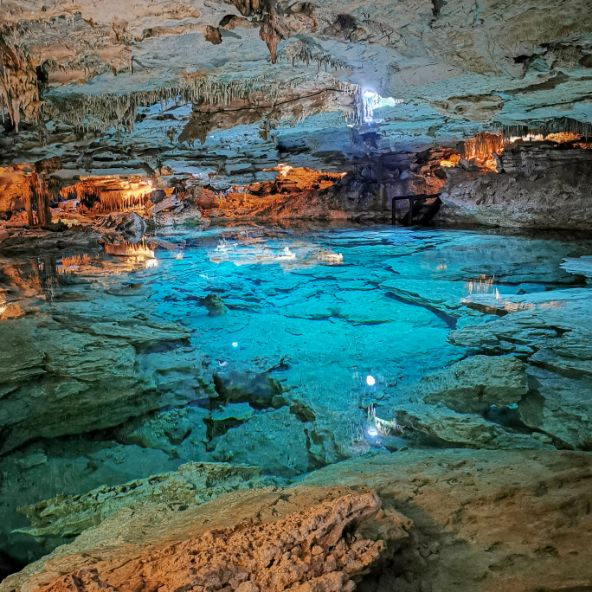About us?
Ecopark Kantun Chi, in the Mayan language: yellow stone mouth, is an ecological park with 5 incredible cenotes and an underground grotto. Located in the heart of the Riviera Maya, it has everything you need to live a unique adventure in the jungle.
Enjoy a unique experience that will envelop all your senses, explore the Mayan jungle, marvel at its majestic crystal-clear waters; harmonize with the tranquillity, mystery, and beauty of this magical place.
We offer you three different tours, where you can discover our Mayan roots, the local flora and fauna. Venture to visit our underground cave and the 5 different cenotes, an experience to live with family or friends.
Fun Facs

What is the cenote?
The ancient Mayans believed that cenotes were sacred places. We tell you what they are and why they are believed to be the door to the Mayan underworld.
The word “cenote” derives from the Mayan dzonot: cave with water. The ancient Mayans believed that Chaak, the god of rain, lived in caves and cenotes. Today, the peninsula’s native farmers still pray to Chaak for the gift of rain, while the cenotes provide archaeologists with new insights into sacred landscapes and their complex cosmology.
The Yucatan Peninsula is made up of limestone subsoil, a highly permeable material, due to erosion, the roof of some of these caves has collapsed, revealing a small mirror of freshwater. In its subsequent evolution, the cenote is filled with debris, its depth decreases, it dries up and is finally reduced to a pit with vegetation. While it is not flooded, water filters forms stalactites and stalagmites that sprout from the ceilings and floors, respectively. These calcareous columns can reach diameters of one meter up to seven or eight meters in length.
Yucatan has more than 3,000 cenotes, unlike the Riviera Maya, which are not connected by underground rivers. This set is called “The Ring of Cenotes” which was formed by a meteorite that hit the earth 65 million years ago, causing the extinction of the dinosaurs.
Cenotes are classified:
- Open sky cenote.
- Semi-open cenote.
- Underground cenote or grotto.
This classification is related to the age of the cenote, being the mature ones the ones that are completely open and the younger ones the ones that keep their dome intact.




